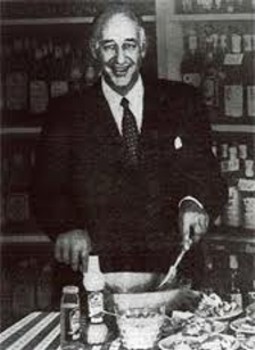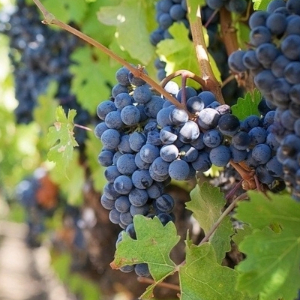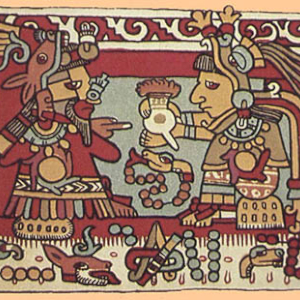A Caesar Salad by any other name would taste as good. But why is it called a ‘Caesar’? Read on to discover where some of our most iconic foods came from – And how they got their names…
Behind every iconic culinary creation is a colourful, often quirky creator. And an equally fascinating origin story. I’ve delved into some of them to satisfy my own curiosity. And the more I learn, the more I feel these legendary tales deserve to be shared…
Some misconceptions clarified…
Yes! Many commonly-told food origin stories are more myth than legend. And we’ll sort those out for you as we go along…
Caesar Salad
 This is a great example to start with. Not only are the origins of the dish often mistaken, but most folks think it’s older than it really is. And from another continent altogether. If you assumed the dish was created in ancient Rome, and named for Empeor Julius Caesar, you can be forgiven the misap-prehension. It’s entirely plausible, but nowhere near the truth.
This is a great example to start with. Not only are the origins of the dish often mistaken, but most folks think it’s older than it really is. And from another continent altogether. If you assumed the dish was created in ancient Rome, and named for Empeor Julius Caesar, you can be forgiven the misap-prehension. It’s entirely plausible, but nowhere near the truth.
Caesar Salad is named after its inventor, Chef Caesar Cardini (1896-1956) (pictured above, left), an Italian immigrant to the U.S. who settled in San Diego, CA, but was working just across the border, in Tijuana, Mexico, at the time. He was working in Mexico to avoid the U.S. Prohibition law (1920-1933) which would have forced him to cook without wine at home.
As with many famous dishes, Cardini first threw together his eponymous salad with what he had left over after a really busy July 4, 1924 supper service. Over Romaine Lettuce, he drizzled a dressing made with Egg Yolks, Olive Oil, Lemon Juice, Parmesan Cheese, Crushed Garlic, a dash of Worcestershire, Salt and Black Pepper. It was an immediate hit.
Olives
In their many roles and guises, Olives have been part of Mediterranean cuisine since the beginning. So enthralling is their unique, umami-soaked flavour that they’ve actually become a staple across Europe and North America.
As origins go, Olives have just about all other foods we eat today beaten by a long mile. They are believed to have been growing wild in the Med region for as long as 20 to 40 million years. More to our point, they’ve been domesticated and cultivated there for at least 5,000 years.
The world ‘olive’ originated in ancient Greece (no surprise) as ‘elaion’, migrated to Latin as ‘oliva’, and finally landed in French as ‘olive’.
Cinnamon
This spice is common today, and used in many dishes, both sweet and savoury. But when it was first commercialized, it was astronomically expensive. And keeping it’s geographical origin secret made certain Egyptian spice merchants fabulously wealthy.
We now know cinnamon originally called India home, and came west as many other spices did, thanks to opportunistic traders. And when it did, the Med-region resellers put on a major promotional campaign boosting its popularity sky high.
The name ‘cinnamon’ was applied to the tree-bark product in an earlier form (‘kinnamon’), by the Maylay traders and Semitic entrepreneurs who brought it to the Med. It passed into early Greek as ‘kinnamōmon’ and then to Latin as ‘cinnamon’. It reverted temporarily to ‘cinnamome’ in Old French before settling in its current spelling in Old English.
Wine
 This ubiquitous beverage, now produced in virtually all suitable climates around the world, can trace its ancestry back at least 8,000 years, in the Mediter-ranean region. Some of the oldest grape vines still producing grow in Bulgaria and Croatia.
This ubiquitous beverage, now produced in virtually all suitable climates around the world, can trace its ancestry back at least 8,000 years, in the Mediter-ranean region. Some of the oldest grape vines still producing grow in Bulgaria and Croatia.
The name ‘wine’ – though it may have been too obvious for some of you out there who like a good mystery and just naturally want to dig deeper – comes simply from the Latin ‘vinum’, which loosely translates as ‘from the vine’. From there it went through the German ‘Wein’, to the old English ‘win’, thence to the current ‘wine’.
Ketchup
No matter how you spell it – Ketchup, Katchup or Catsup – it’s all the same familiar, thick, red tomato-based sauce. And all those spellings are acceptable, according to most authorities.
But it goes way back, historically, to a traditional home place you probably didn’t suspect… Southern China! The earliest ketchups were nothing like the sauce we know today.
The History channel explains: “The precursor to our ketchup was a fermented fish sauce from southern China. As far back as 300 BC., texts began documenting the use of fermented pastes made from fish entrails, meat byproducts and soybeans. The fish sauce, called ‘ge-thcup’ or ‘koe-cheup’ by speakers of the Southern Min dialect, was easy to store on long ocean voyages.”
From there, “The pastes spread along trade routes to Indonesia and the Philippines, where British traders developed a taste for the salty condiment by the early 1700s. They took samples home and promptly corrupted the original recipe.”
And the gradual ‘corruption’ of the recipe has continued without let-up over the centuries. Today, what we call Ketchup retains the same tart and umami-ish character, but it’s no longer a fermented food. It’s based on tomatoes, not ‘fish entrails’. And it’s picked up a signature sweet note with the addition of sugar.
Curiously… A descendant of the ancient Asian ketchup is now the most popular condiment and cooking sauce in Indonesia. ‘Kecap manis’ is described as, “a sweetened aromatic [fermented] soy sauce, […] which has a darker color, a viscous syrupy consistency, and a molasses-like flavor due to the generous addition of palm sugar.”
Coffee
There are many stories competing for the honour of ‘The Origin of Coffee’. The one I like best is included in a compendium post on MSN:
“[Coffee] was first discovered in Ethiopia over 1,000 years ago when a goat herder noticed his animals becoming excited after eating the beans from a coffee plant. Thinking he’d found something from the heavens, he presented the beans to local monks – who thought they were the devil’s work and tossed the beans into a fire.”
But they were soon converted to caffeine…
“The wonderful smell of roasting coffee beans filled the room, and the tea-drinking monks then poured water over the crushed beans, immediately falling in love with the new drink.”
Chocolate
 Sounds a little like the most-accepted origin story of chocolate, by the ancient Mesomericans. They called it ‘xocolatl’ – specifically referring to the spicy, bitter, unsweetened chocolate beverage the Aztecs drank, on which modern ‘Hot Chocolate’ is based.
Sounds a little like the most-accepted origin story of chocolate, by the ancient Mesomericans. They called it ‘xocolatl’ – specifically referring to the spicy, bitter, unsweetened chocolate beverage the Aztecs drank, on which modern ‘Hot Chocolate’ is based.
Wikipedia relates: “Cacao has been consumed in some form for at least 5,300 years starting with the Mayo-Chinchipe culture in what is present-day Ecuador, and later Mesoamerican civilizations also consumed chocolate beverages before being introduced to Europe in the 16th century.”
The folks who first tried cocao took it to their religious leaders, just like the coffee guy. But the Mayan priests got hooked on it right away, with no reser-vations. They loved it so much, they reserved cocao for themselves – at first, as a ceremonial temple libation. In fact, the official biological designation for the cocoa plant is ‘theobroma cocao’ – ‘Food of the Gods’!
Tomatoes
Tomatoes were just one of the delicacies brought back from Central and South America by the first European explorers. Their earliest known home place is on the mountainsides of the Andes, in Peru and Chile. The other world-changing crop the Spanish conquistadors adopted was… Potatoes!
Tomatoes were simultaneously loved and hated (almost at first sight), in Europe. Some Spanish Catholic priests called them ‘Devil Apples’, after it quickly became clear that their greenery was poisonous. (Tomatoes – and potatoes – are, in fact, members of the ‘nightshade’ family.) Also, their acidic juice blackened the pewter plates from which the nobility and clergy dined. Literally, an ungodly omen!
In contrast, French foodies of the era just as quickly embraced the brand new fruit, appreciating its rich, piquante flavour. They called tomatoes ‘Love Apples’!
‘Tomato’ came up through the centuries fairly directly, through Spanish, beginning as the Aztec Nahuatl-language word ‘tomatl’, meaning ‘fat water fruit’.
My take
The foregoing origin stories are just a taste of what you’ll discover if you simply Google the names of your favourite foods or dishes, including the word ‘history’ in the search string. Amaze and amuse yourself for hours! And learn a whole lot more about the foods you love…
~ Maggie J.

